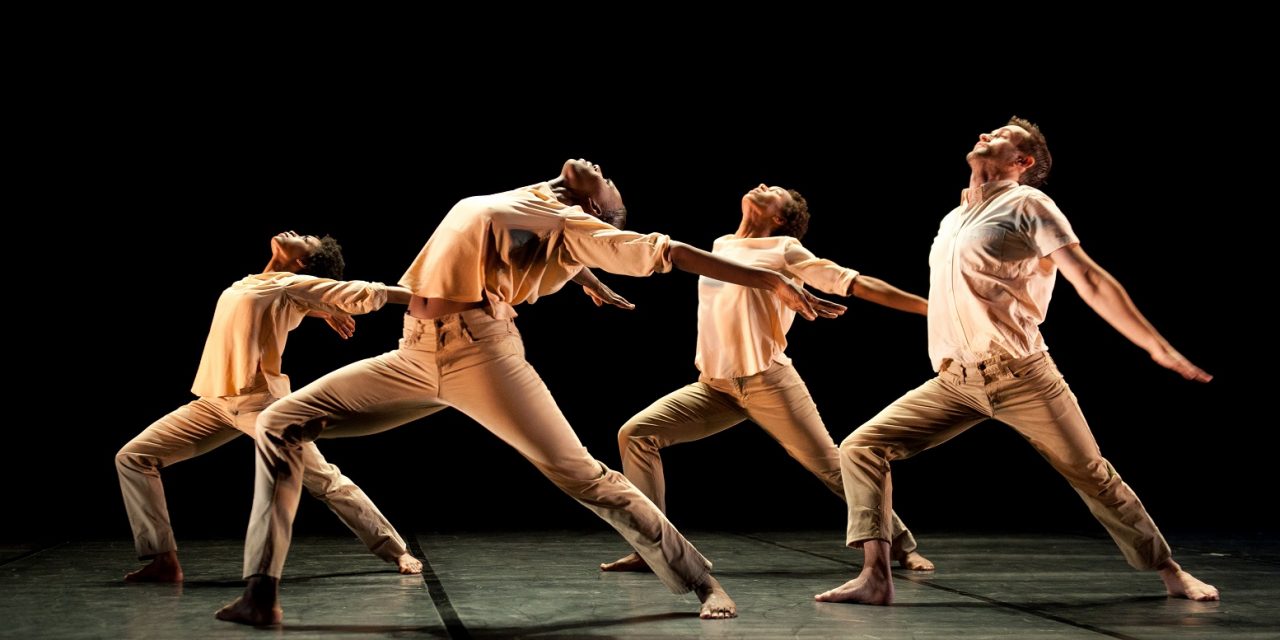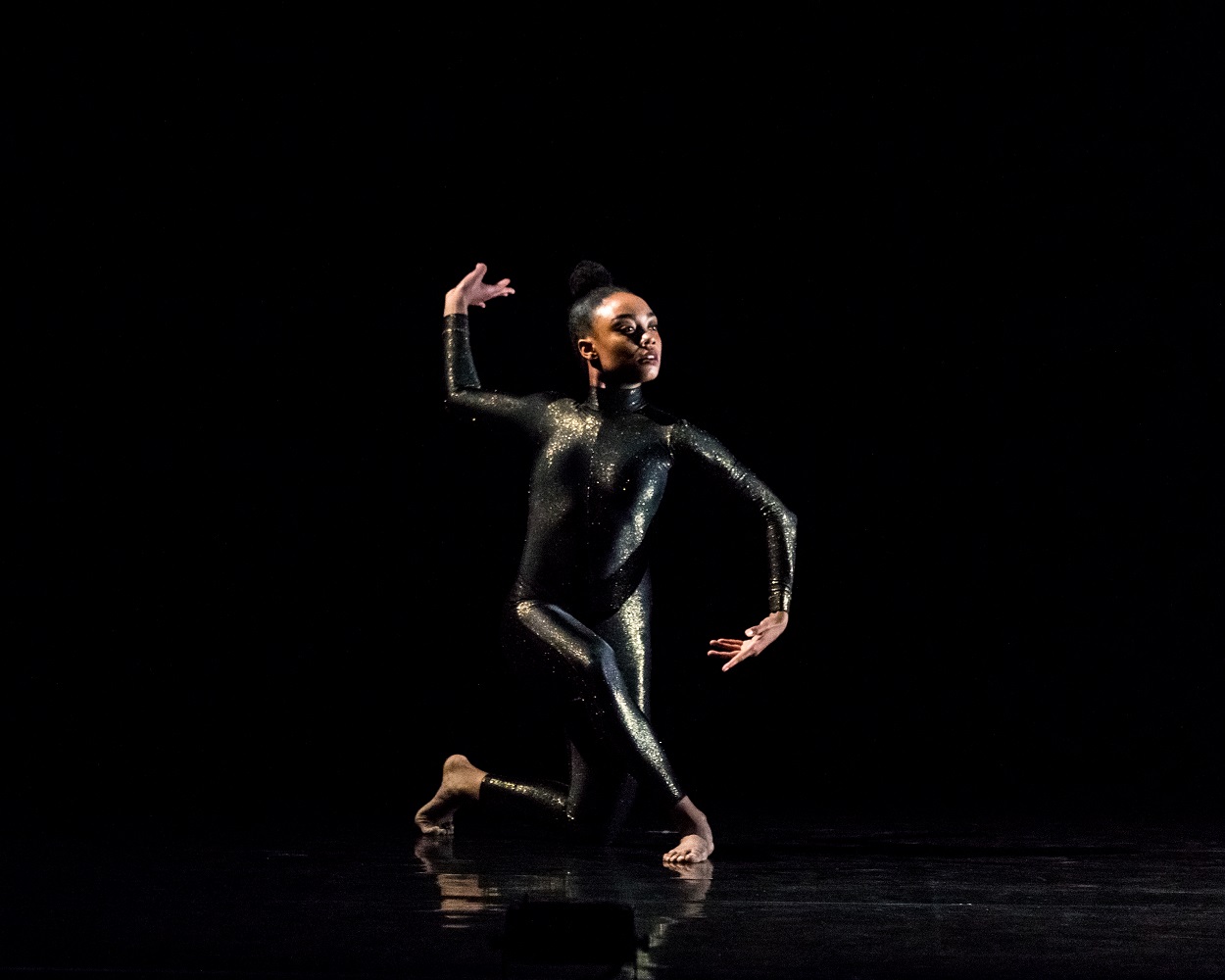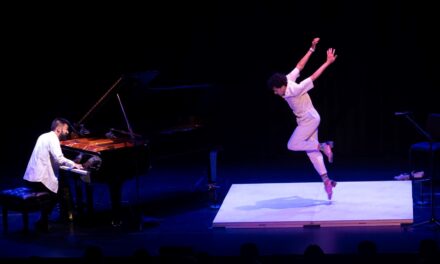The Carpenter Performing Arts Center in Long Beach was an ideal venue for the inspiring performance of A.I.M (Abraham.In.Motion) lead by Artistic Director and Choreographer Kyle Abraham. The program consisted of four very individual works, each demonstrating his artistic talent and showcasing the virtuosity of his dancers. The Carpenter Center’s spacious stage also provided ample room for these incredible movers to soar.
Abraham is a 2013 MacArthur Fellow, 2016 Doris Duke Award Recipient, a 2018 Princess Grace Statue Award Recipient, and the recipient of a prestigious Bessie Award for Outstanding Performance in Dance, to list just a few of his accolades. Since establishing his company in 2006, Abraham’s work has been commissioned by numerous companies including Hubbard Street Dance Chicago, and the Paul Taylor American Modern Dance Company, and he also created a new solo work for American Ballet Theater principle, Misty Copeland.
First on the program at the Carpenter Center was Solo Olos created by the late postmodern choreographer Trisha Brown and restaged for A.I.M. by Cecily Campbell and Stuart Shugg. It was a very physically grounded work, first performed as a solo by Brown in 1976, and restaged to be performed by five dancers in 1977.
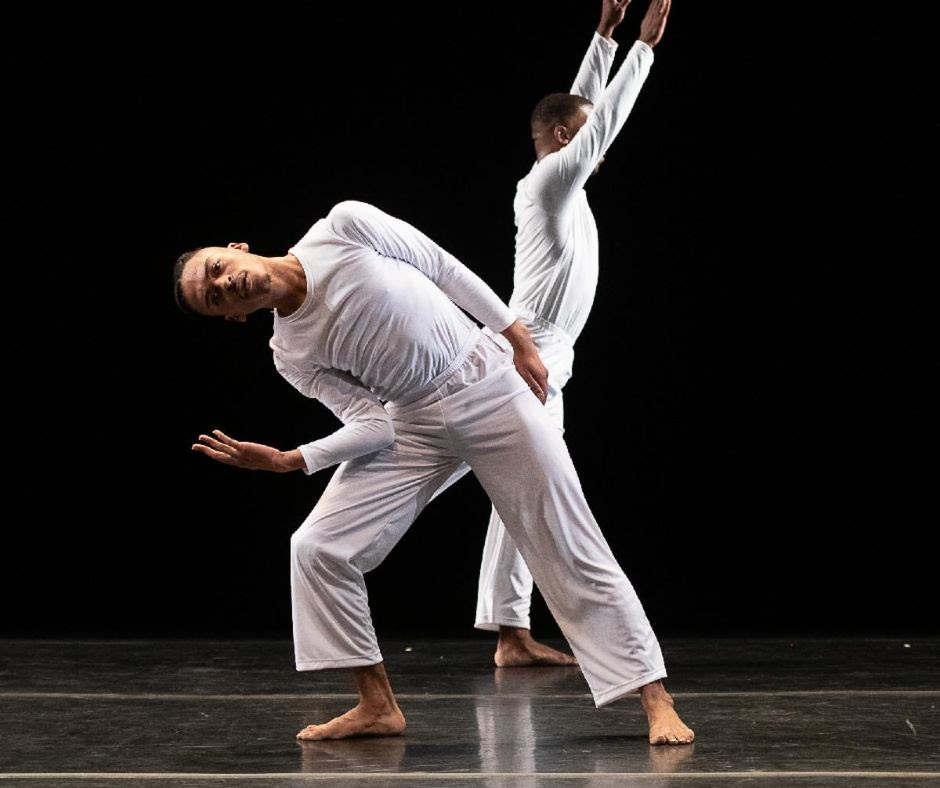
Javon James (front) and Claude “CJ” Johnson in “Solo Olos” – Choreography by Trisha Brown – Photo courtesy of the Carpenter Performing Arts Center
Performed in silence, Solo Olos opened with five dancers costumed in all white, performing a long unison phrase with Brown signature release technique inspired movement. After a few minutes, however, one (Javon Jones) left the stage to sit in the front row of the house where he began calling out directions in what I read to be, an unrehearsed order. The phrases had names, Branch and Spill, and Jones gave directions such as “Marcella, Spill”, “CJ, Branch” or “Keerati, reverse”. The dancers followed Jones’ directions without a second’s hesitation.
As a solo, Brown stated that the work was a solo movement palindrome (a word, phrase, or sequence that reads the same backward as forward). The dancers began in unison but as Jones called out his directions, they soon got out of sync, splintering off into solos, duets and trios. As the work progressed, Jones’ directions shifted who was dancing alone, who was in the duets, etc., eventually verbally re-synchronizing them back into unison. The four stopped to form a line and the curtain came down as Jones proclaimed, “and now we move on”.
The full cast of Solo Olos included Keerati Jinakunwiphat, Claude “CJ” Johnson, Javon Jones, Catherine Ellis Kirk, and Marcella Lewis.
Abraham’s The Quiet Dance was an emotionally touching, sad, peaceful and gorgeous work. Near the end, I wrote in my notes that it was “painfully beautiful”. He never let go of his vision of quietness. I counted perhaps two or three jumps, and those barely left the ground and were over in an instant. The movement was contained but loose and lyrical, and the mood somber but loving. The dancer Jones was often featured as a solitary figure; an outsider whose inner feelings were expressed by the others onstage. The movement was highlighted with flowing arm gestures that repeated, but never lost their sincerity or welcome.
The Quiet Dance is a work that has to be experienced. Abraham drew us in, wrung our hearts, reminded us of our own personal experiences and feelings, and almost broke our hearts. Performed to the luscious music “Some Other Time” composed by Leonard Bernstein and played by Bill Evans, I applaud Abraham for not fearing the solitude, the stillness or the restrained emotion.
The stunning cast of The Quiet Dance were Javon Jones, Tamisha Guy, Keerati Jinakunwiphat, Claude “CJ” Johnson, and Catherine Ellis Kirk.
Marcella Lewis was born in Los Angeles, trained by the city’s treasured dance artist Lula Washington, and Show Pony was the perfect showcase for both her dancing and her performance excellence. Performed to music composed by artist Jlin, Lewis’ character was portrayed as an isolated prize act, trained to perform on demand. We got glimpses of her personality off stage, but she was always exploited back into service like Norma Jean constantly forced into becoming Marilyn Monroe.
Lewis did more than simply entertain us. She wowed us with her flexibility and her control, which was challenged by Lighting Designer Dan Scully’s ever-shifting light. Lewis was flooded by a center special, jerked into diagonal corridors, guided back into the center, or suddenly hit from all sides by angles of light. This amplified the sense of the performed being exploited, and through out, Lewis remained in total control and never stepping out of character. Brava!
Costume Designer Fritz Masten deserves mention here for his shiny unitard that revealed every curve of Lewis’ body. It was the perfect garment for a center ring performer.
For the final piece on the program Drive, Designer Karen Young costumed the dancers in dark grays with splashes of red, and Abraham choreographed this strong work in collaboration with A.I.M to music by Theo Parrish and Mobb Deep. The work hinted at relationships without defining or stereotyping them, and the movement was some of the most physically energetic of the evening and highlighted each and every performers’ individual strengths. Abraham has a talent for moving his dancers in and out of unison phrases without disrupting his central idea or vision, and his choice to unite them never felt arbitrary or forced. Gestures like fist bumps aided to clearly define the environment.
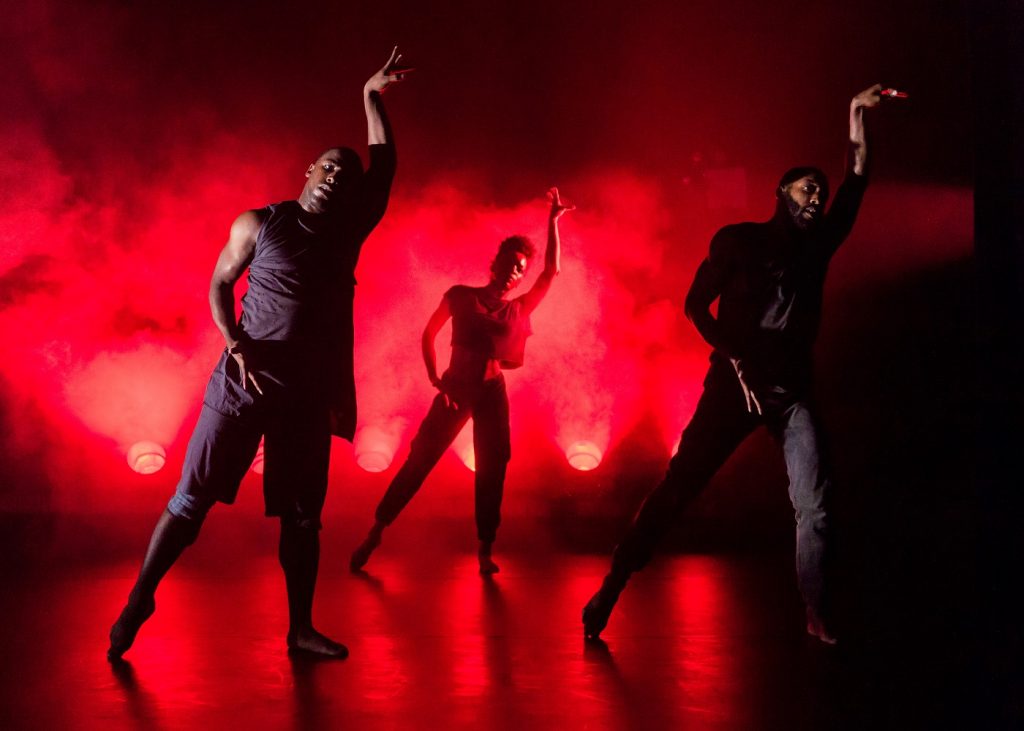
A.I.M. – Claude “CJ” Johnson, Tamisha Guy, and Jae Neal in “Drive” – Choreography by Kyle Abraham – Photo: Ian Douglas
Drive was, however, a competition for prominence between Lighting Designer Scully and Choreographer Abraham. A blinding row of amber lights melted into a beautiful diagonal of blue lights above a row of red ones that then shifted into a variation of those colors and shapes. A mist entered and dispersed, and finally we were blinded by a row of tall, thin tubes of white light that totally obscured the action onstage. This related to the turmoil of inner-city life but for those seated directly in front of the light instruments, it wiped out the closing picture.
Abraham is a talent to follow and he is blessed with an incredible cast of dance artists Tamisha Guy, Keerati Jinakunwiphat, Claude “CJ” Johnson, Javon Jones, Catherine Ellis Kirk, Marcella Lewis, and Jae Neal . If A.I.M. is performing near you, go see them. You will not be disappointed.
Written by Jeff Slayton for LA Dance Chronicle, January 27, 2020.
To learn more about A.I.M. and Kyle Abraham, click here.
To visit the Carpenter Performing Arts Center website, click here.
Featured image: A.I.M. in The Quiet Dance – Choreography by Kyle Abraham – Photo: Ellen Crane

